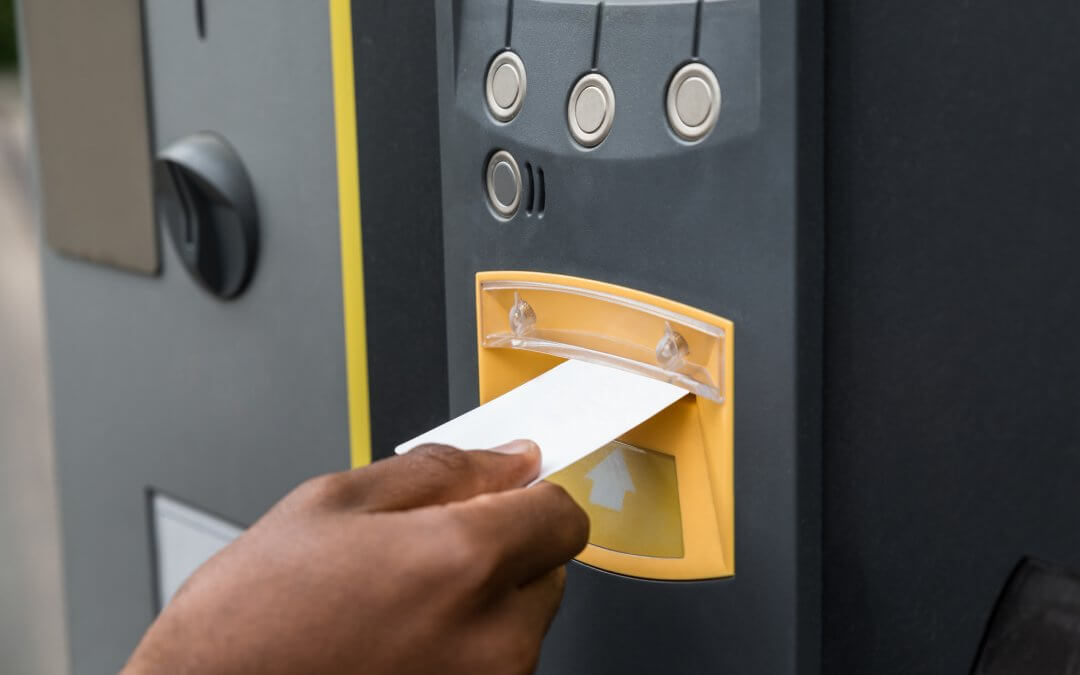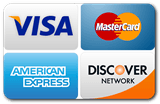64% of companies have experienced web-based attacks, and 43% of cyber attacks target small businesses.
Not only are web-based attacks threats, building access is threatened when anyone can have access to every level and every room. Most commercial burglaries occur when a business is closed, so it is important to have an alarm system that can offer 24/7 monitoring.
Does this data frighten you? You shouldn’t be worried as long as you have a great security access control system. Data and security are both very important parts of an organization’s IT.
Access control can allow peace of mind, not only through building access but because it can effectively protect the business data from all types of intruders. Commercial locksmiths can install and repair the latest technology in order to protect your business, yourself, and your employees.
There are a few different types of access control systems. Finding the right one for your business can keep it safe.
Types of Access Control Systems
The use of access control is for identifying an individual who does a specific job within your business. Security access control systems authenticate individuals giving only them the key to the information they need. Installation and repair for access control systems are an affordable way to protect your business.
Business protection can mean many things, data protection and physical protection of the building and its employees. Access control can be a solution to all your protection needs.
The three types of access control systems are Discretionary Access Control (DAC), Mandatory Access Control (MAC), and Role/Rule-Based Access Control (RBAC).
Discretionary Access Control
One type of security access control system is the discretionary access control system (DAC), also referred to as a “need-to-know” access model. This is usually the default system for most desktops.
This system allows the owner of the business to decide which people are allowed in a specific location whether it be physical or digital. Digital access could mean access to specific files of information, while physical access could mean building access.
Compared to other systems, DAC is the least restrictive system because it gives the individuals control over the objects that they own, including the programs. Users may transfer object ownership to other users. If unauthorized users try to get into this access system, user access is restricted.
The discretionary access control system is simply described as a practice of sharing company data safely.
With the discretionary access control system, a user can only set permissions for the objects that they own, but some access control systems allow the system or network administrator to decide which permissions users are allowed to set.
Although this security access control system is more flexible than others, it increases the risk that data will be made accessible to users that should not have access. This means permissions could be given to those who are inherited into other programs which could lead to malware within the system that the owner is not aware of.
Discretionary Access Control in Business
Larger companies, with hundreds or even thousands of staff members, could see issues with a discretionary access control system. These issues include a lack of complexity, onboarding, and termination controls.
Job changes under the discretionary access control system could result in “privilege creep” where permissions associated with a former position may not be right for the new position.
This type of access system works best for smaller businesses that do not have an IT staff. This is because it is simple and convenient, allowing for smooth operation within the business. Operating well is an important thing to consider when choosing the right access control system for your business.
Features of Discretionary Access Control
Features that could enhance your business with the discretionary access control system include flexibility, ease of control, backup, and usability.
Flexibility allows users the ability to customize their access policies individually.
Ease of control comes from all of the networks being connected to a central device. This security system allows for easy monitoring of the access points that users are granted or denied entry to. Because DAC can be a security card access system, access can be easily monitored from a particular part of the business.
Devices such as keycards, used for building access, is an example of a DAC device that allows for ease of control.
Backup is helpful for businesses that integrate access controls into their security system. Backups are crucial and discretionary access control systems can backup security policies and data to make sure the access points are effective. This is also important in case of loss of information due to the server crashing.
As an easy to use system, usability is a no brainer. Access control is no longer complicated because DAC allows easier management to the network.
Other important benefits of this security access control system consist of data security, minimizing administrative obligation, customization, fast authentication, efficiency, and minimizing costs.
Mandatory Access Control
Mandatory access control systems (MAC) are commonly used within organizations that require a heavy emphasis on the protection of data. This could include organizations such as military institutions, where confidentiality and classification are of the highest importance. It is primarily used by the government.
This security access control system only allows the owner and custodian to have control over access, meaning it does not allow permit owners to have access to a unit or facility. All ends users will be given labels permitting them access through security and written security procedures.
This type of access control is the strictest of all levels. Data files can be controlled by the settings made by the system administrator. Access to all objects is controlled by the operating system based on the configured settings, making it impossible for users to change the access control of any resource object.
It works beginning with security labels that contain two pieces of information, a classification, and a category. A classification is top secret and confidential and a category shows the management level of a department or project.
Because of this, the users are assigned a classification and category in which the MAC system checks the classification and category to ensure security. If the credentials are matched, access for that user is allowed. Both the classification and category must match to gain access.
Mandatory Access Control in Business
Although the mandatory access control system is the most secure, there are some downsides. This access control system requires a lot of planning to correctly work in a business. Once implemented, it needs a high system management overhead because it has to be constantly updated to allow new data, users, and other changes in the categorization and classification of existing users.
The major benefits of this type of security access system include that it provides tighter security because only a system admin can access or change the controls, reduces security errors, and the enforced operating systems delineate and label incoming applications data, creating a specialized external application access control policy.
This system is often employed in government and military institutions because it is the business that classification is most needed.
RBAC Systems
There are two types of RBAC systems, role-based access control, and rule-based access control.
The use of access controls can be locked down with RBAC to implement policies and procedures. These types of access control systems will restrict data different from a file level.
Smaller businesses can benefit from these types of access control systems because many users do multiple jobs which results in needing access to a variety of information that may be unrelated.
Users only need access to the data required to do their jobs. RBAC will ensure that restrictions are in place under the rules or roles that work for your business. The system is designed to make business seamless by allowing the system administrator only to assign access to specific job titles. It could be necessary to use both RBAC systems at the same time in some situations.
Although both systems are similar, they do have important differences.
Role-Based Access Control
Role-based access control (RBAC) is the most used in terms of access control systems. Although it is seen in many households, RABC is beginning to get bigger in the business world.
With role-based access control, data is protected by user roles. Groups or categories are created based on the user’s job functions or departments. These categories will give users access to specific data within their departments.
For example, Human Resources may have access to data about the employees while other groups are unable to receive that same access. Role-based access controls can be implemented by levels, meaning hire up HR members could have access to social security numbers of the employees, which lower ranked HR do not.
This type of access heavily depends on users logging into a particular network to have their credentials verified.
Rule-Based Access Control
Very similar to role-based access control is rule-based access control, also known as RBAC. This type of RBAC is focused on the rules within the data’s access or restrictions rather than the roles.
The rules could include parameters, such as allowing access or denying access to specific IP addresses. Access could be allowed if it came in within a certain port.
Specifications like this prevent cybercriminals from accessing information even if they do get to your network. This type of access system can be implemented on a file system that restricts data access to business hours only.
When it comes to user access, rule-based access can be applied to broader scenarios, rather than simplifying for specific user groups.
Benefits of Access Control Systems
As previously mentioned, physical security and web security are huge benefits to implementing an access control system into your business. But, even setting up simple security procedures, like card access security systems, can give off the impression to the outside world that your business means business. This benefit can also provide trust and project professionalism.
Access control systems can provide different forms of authentication which could be a key card, password or pin, fingerprint, etc. Layers of security is an important mention when benefiting your business. Some systems use swipe cards, video setups for facial recognition, and CCTV cameras.
With access control systems, a business can track the movement of its employees. This allows the business to look for ways to spike productivity and find sales increases.
Systems can include lockdown modes and alarms that will add an extra layer of protection when business hours are over. Allowing business owners to sleep peacefully, knowing their business is safe.
Those who do a lot of business offsite can keep track and manage their access control system from a smartphone.
Security access control systems are made to cater to the needs of your business. Having the right one will allow you to reap all of the many benefits, and most importantly keep everyone and everything safe.
Protect Your Business Today!
Now that you have quite an overview of what access control systems are, you probably know which one will be the perfect addition for the safety of your business.
713 Locksmith Houston is a great start for those looking to implement one of the three types of access control systems into their business. A top-rated company that provides 24/7 availability, high-quality locks, fast response times, and experienced technicians is the right choice when deciding to install a security access control system.
You can get a price estimate today with no hidden fees. The technicians provide a full-price and explanation of charges before any of the installation or repair services are performed.
What are you waiting for? Protect your business fully with security access control systems!





